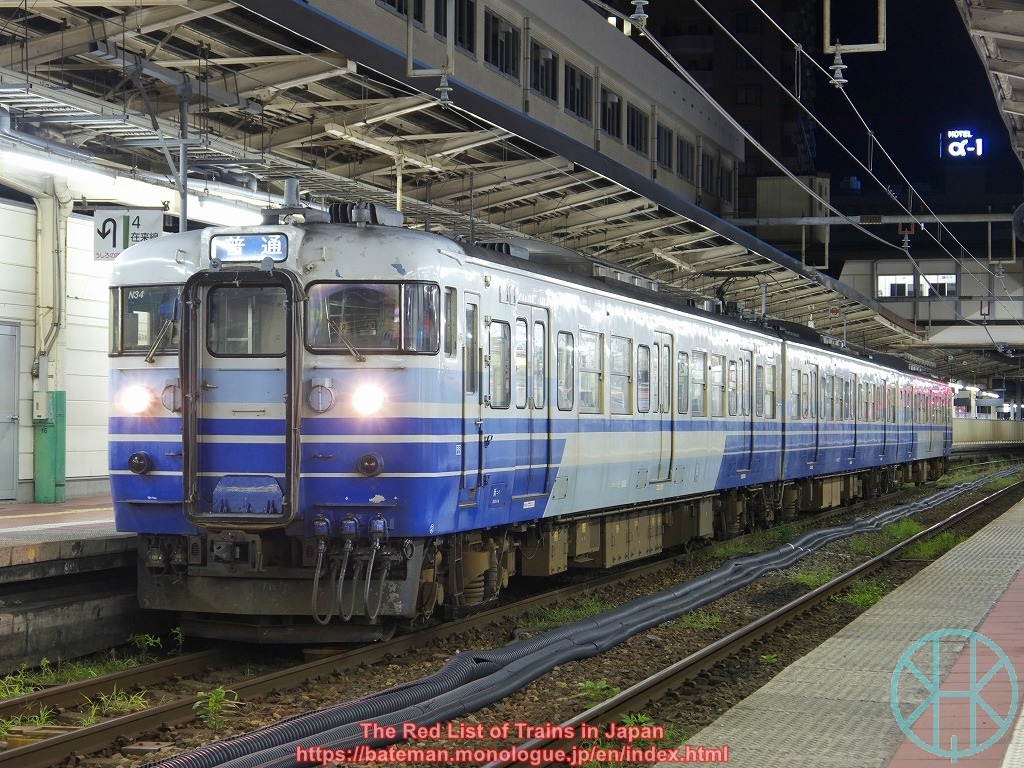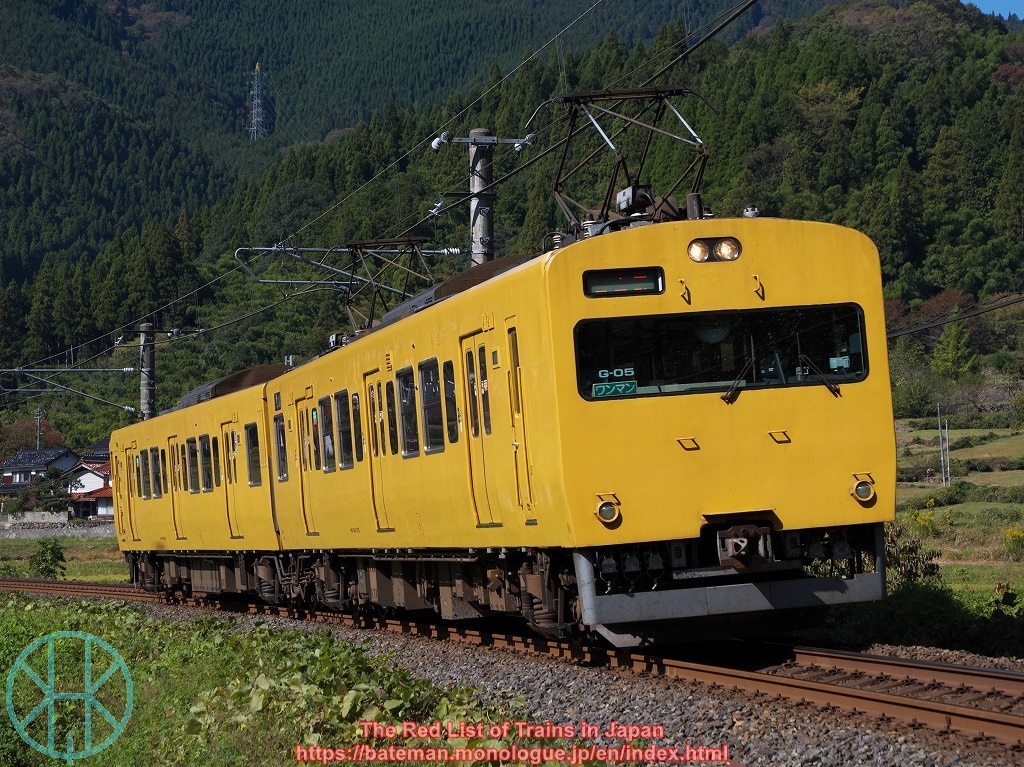JNR 115 series

Data (as of 29 Nov 2025)
| Status: | Vulnerable |
| (JR West) | |
| Endangered | |
| (Shinano Railway) | |
| Extinct | |
| (JR East, JR Central, | |
| Izukyu) | |
| Constructed in: | 1963-83 |
| Number built: | 1,955* |
| Registered: | 268 |
*Including six carriages converted from 113 series and 28 carriages converted from 117 series.
History
The 115 series was designed by Japanese National Railways as a standard suburban train type for lines with steep gradients, most of which are in cold regions. It is based on 111 and 113 series, but the 115 series has new features to deal with such harsh conditions, including enhanced braking system, more powerful motors and semi-automatic doors. Furthermore, the 115 series can be formed of coaches fewer than the 111 and 113s easily (such as three coaches), as less passengers than urban areas use the lines which the 115 series serves. All carriages introduced are standard-class coaches.
The 115 series were used on various lines from Niigata to Yamaguchi Prefectures. In the Greater Tokyo Area, they were the most common train on Chuo Main Line (from Tachikawa to the east), Tohoku Main Line (also known as Utsunomiya Line) and Takasaki Line. They were also used in Shizuoka and Yamanashi Prefectures including Gotemba and Minobu Lines. In the west, the 115 series has been very common in Okayama and Hiroshima Prefectures.
When JNR was privatised in 1987, JR East, Central and West succeeded the series.Unlike the 113 series and other commuter trains introduced by JNR, the 115 series remained as a key player on mainline until the 2010s. It is also worth noting that JR West converted and raised maximum speed of some 115 series trainsets and used the in Osaka and surrounding cities until the early-2000s.
Some units were transferred to private railways as well, such as Shinano Railway and Izukyu.
Current Operations & Future Prospects
The 115 series trains are currently operational on JR West and Shinano Railway networks. Those on JR Central and Izukyu networks have been withdrawn by 2008, while others used by JR East retired in 2022.
JR West uses them in Okayama and Yamaguchi areas, mostly on San-yo Main Line as well as Ako, Hakubi and Uno Lines. There are also limited services on Fukuen and San-in Lines. The company has been replacing them with 227 series, and the number of the 115 series is dramatically declining. In addition, many units are used on San-yo Main Line in Yamaguchi area, where brand new trains will be introduced in around 2027.
Shinano Railway uses them on the entire lines, though gradually decreasing as brand new trains are introduced. The company plans to withdraw all 115 series trains by 2027, though the company concedes that the plan is subject to change because of the COVID-19 pandemic.
Photos

So-called "Yokosuka Livery", which was common on Chuo Main Line.

Those in Nagano area were also common in the west of Tokyo.

The 115 series on Shinano Railway, Nagano Prefecture.

Those in Niigata Prefecture were painted in various ways. This one was once dominant in the area.

A refurbished unit in Niigata area.

JNR adopted "regional liveries" in the 1980s. This one was common in Hiroshima area.

JR West painted the 115 series in various ways as well, but sadly it started painting them yellow or green in 2009 to reduce costs.

Some 115 series trains have ugly front end as JR West converted intermediate carriages, to make trains for rural lines shorter.
(Updated: 29 Nov 2025)
